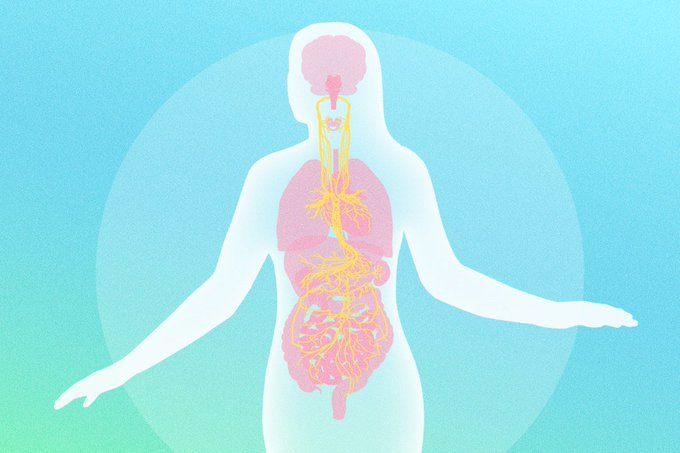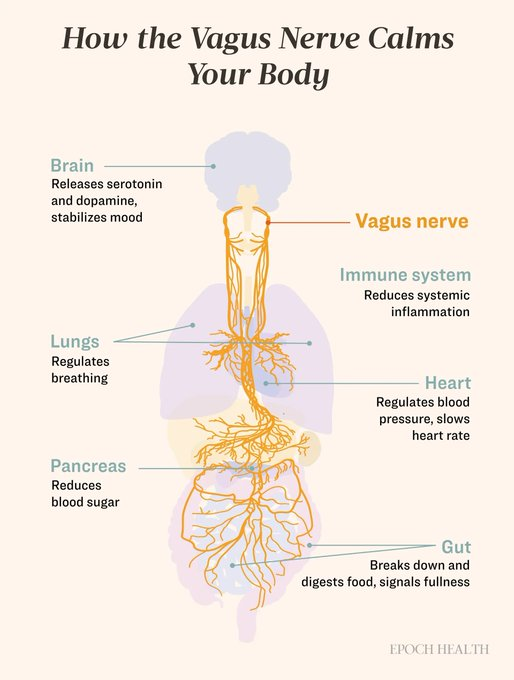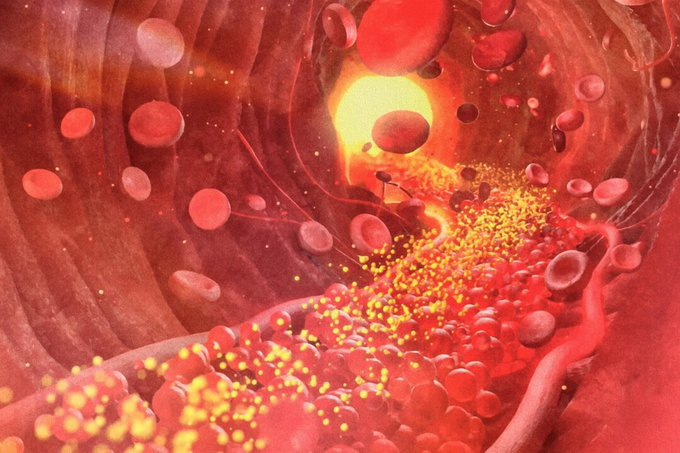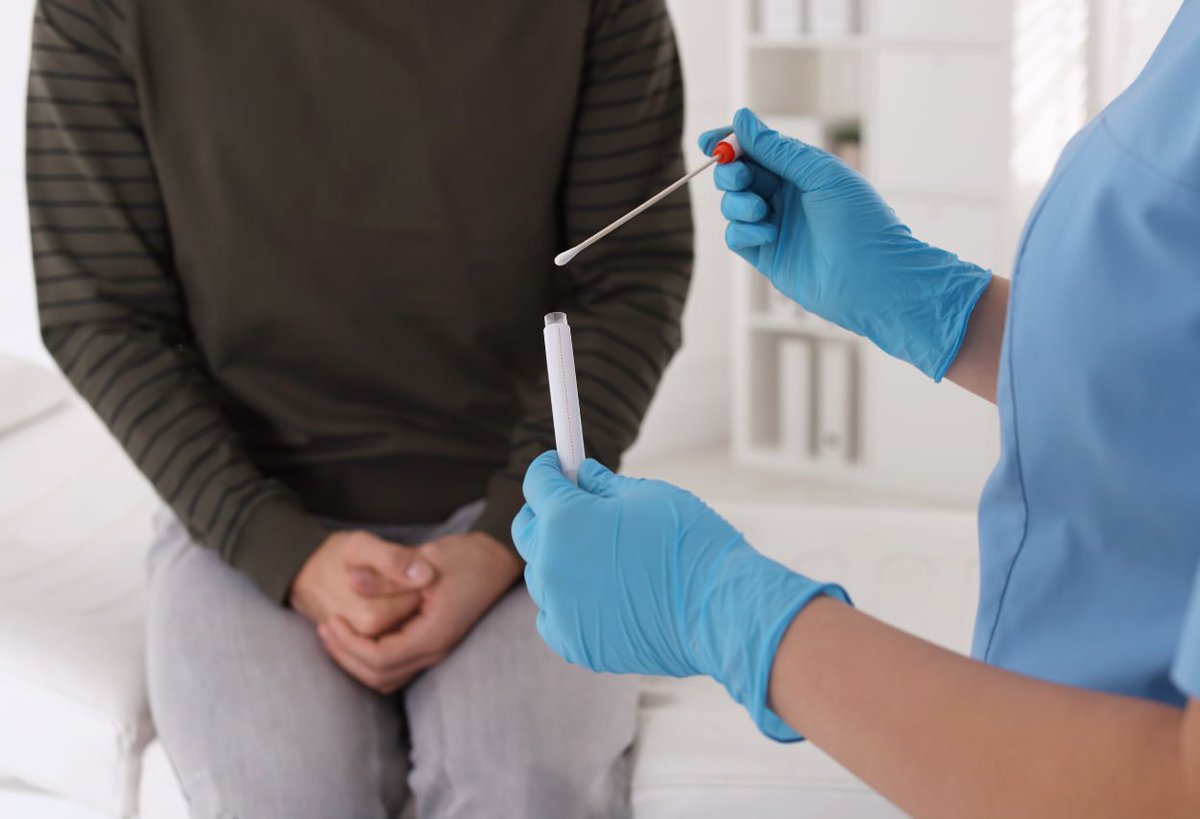A Forgotten Antibiotic Just Shook Up the Lyme Disease Debate
In a pair of new studies, one overlooked drug eliminated Lyme bacteria at doses 100x lower than standard antibiotics—without wrecking the gut microbiome.
Even more surprising? It might prevent infection entirely.
And it's already FDA-approved.
Now the question is… why hasn’t this been used all along?
🧵 THREAD
In a pair of new studies, one overlooked drug eliminated Lyme bacteria at doses 100x lower than standard antibiotics—without wrecking the gut microbiome.
Even more surprising? It might prevent infection entirely.
And it's already FDA-approved.
Now the question is… why hasn’t this been used all along?
🧵 THREAD
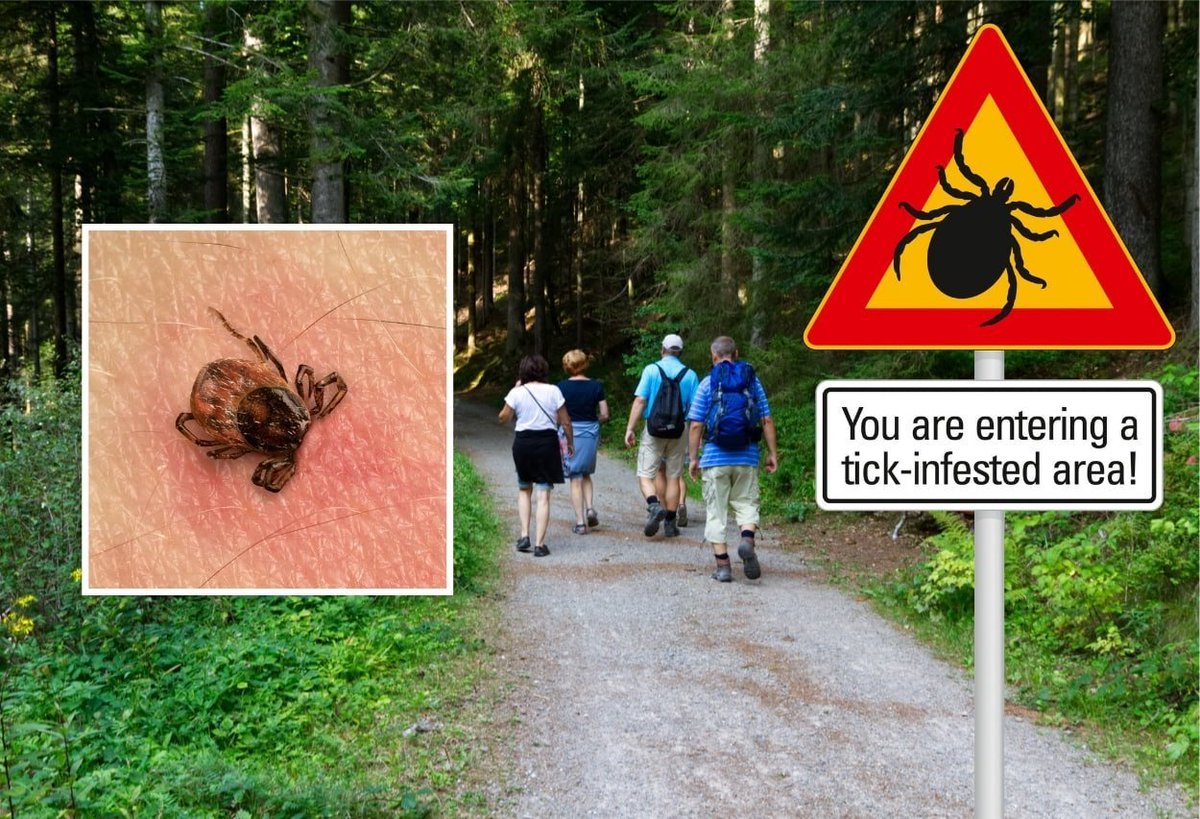
Scientists may be closing in on two major advances in the fight against Lyme disease: an overlooked antibiotic that eliminates the infection at exceptionally low doses and new insights into why symptoms often persist long after treatment.
theepochtimes.com/health/old-ant…
theepochtimes.com/health/old-ant…
In a pair of studies published recently in Science Translational Medicine, scientists showed that piperacillin—a Food and Drug Administration-approved antibiotic—cleared Lyme infections in mice at doses up to 100 times lower than those of doxycycline, the current first-line treatment.
Unlike doxycycline, piperacillin targets the Lyme disease bacteria specifically, sparing the gut microbiome from the disruption that typically accompanies doxycycline use.
Unlike doxycycline, piperacillin targets the Lyme disease bacteria specifically, sparing the gut microbiome from the disruption that typically accompanies doxycycline use.

“What was remarkable to us was how well piperacillin worked at really low doses,” Brandon L. Jutras, a professor in the microbiology-immunology department at Northwestern University Feinberg School of Medicine and lead researcher, told The Epoch Times. “We don’t need to provide it at a concentration that could kill other microbes.”
The team also found that remnants of the Lyme bacteria can remain in the body after being treated with antibiotics, which may explain why some people experience chronic symptoms even after being treated for Lyme infection.
Peptidoglycan—a component of Lyme bacteria’s cell wall—can linger in the body, triggering prolonged immune reactions and helping explain the symptoms of post-treatment Lyme disease (PTLD), where some patients continue to experience symptoms for months or even years after the infection is thought to be cleared.
The team also found that remnants of the Lyme bacteria can remain in the body after being treated with antibiotics, which may explain why some people experience chronic symptoms even after being treated for Lyme infection.
Peptidoglycan—a component of Lyme bacteria’s cell wall—can linger in the body, triggering prolonged immune reactions and helping explain the symptoms of post-treatment Lyme disease (PTLD), where some patients continue to experience symptoms for months or even years after the infection is thought to be cleared.

A More Targeted Approach
Lyme disease is an infectious illness that is spread to people through the bites of infected black-legged ticks and can lead to neurological and heart complications if untreated.
Piperacillin works by interfering with the unique way Borrelia burgdorferi, the bacterium responsible for Lyme disease, builds its cell walls—a process essential for bacterial survival.
Because of this targeted mechanism, researchers believe piperacillin will spare the gut microbiome, which is often disrupted by broader-spectrum antibiotics like doxycycline. However, whether this more targeted approach could help prevent PTLD wasn’t addressed in the study.
Jutras’ team screened nearly 500 FDA-approved drugs, tracking how each compound affected the bacteria’s ability to build its distinctive cell wall.
“We could literally watch what happened to the cell wall when we added antibiotics,” Jutras said. “Piperacillin disrupted that process in a way that was incredibly specific to Borrelia.”
Lyme disease is an infectious illness that is spread to people through the bites of infected black-legged ticks and can lead to neurological and heart complications if untreated.
Piperacillin works by interfering with the unique way Borrelia burgdorferi, the bacterium responsible for Lyme disease, builds its cell walls—a process essential for bacterial survival.
Because of this targeted mechanism, researchers believe piperacillin will spare the gut microbiome, which is often disrupted by broader-spectrum antibiotics like doxycycline. However, whether this more targeted approach could help prevent PTLD wasn’t addressed in the study.
Jutras’ team screened nearly 500 FDA-approved drugs, tracking how each compound affected the bacteria’s ability to build its distinctive cell wall.
“We could literally watch what happened to the cell wall when we added antibiotics,” Jutras said. “Piperacillin disrupted that process in a way that was incredibly specific to Borrelia.”

A little about us: We’re a team of journalists and researchers on a mission to give you REAL and honest information about your health.
Side effects of reading our posts may include: critical thinking.
Follow us for more daily threads—backed by hard data.
—> @EpochHealth
Side effects of reading our posts may include: critical thinking.
Follow us for more daily threads—backed by hard data.
—> @EpochHealth

Currently, piperacillin is used to treat pneumonia and urinary tract infections and is not approved for use against Lyme disease in humans.
Beyond treatment, the researchers also see promise in piperacillin as a potential preventive measure. The idea is that one dose, received right after a tick bite, could stop the infection before it starts.
Early diagnosis is challenging since small tick bites may often go unnoticed, early symptoms may not appear for days or weeks, and not all patients develop the telltale bull’s-eye rash.
Diagnostic tests often rely on antibodies that take time to form, resulting in false negatives during early infection.
“You get bit by a tick. You go to your doctor. Right now, they might tell you to wait for symptoms or a positive test result,” Jutras said. “But with piperacillin, the idea is that you could receive a single prophylactic dose. It wouldn’t harm your microbiome, and it might prevent illness altogether.”
Beyond treatment, the researchers also see promise in piperacillin as a potential preventive measure. The idea is that one dose, received right after a tick bite, could stop the infection before it starts.
Early diagnosis is challenging since small tick bites may often go unnoticed, early symptoms may not appear for days or weeks, and not all patients develop the telltale bull’s-eye rash.
Diagnostic tests often rely on antibodies that take time to form, resulting in false negatives during early infection.
“You get bit by a tick. You go to your doctor. Right now, they might tell you to wait for symptoms or a positive test result,” Jutras said. “But with piperacillin, the idea is that you could receive a single prophylactic dose. It wouldn’t harm your microbiome, and it might prevent illness altogether.”

Jutras noted that while the findings make piperacillin a promising option, it must first be tested and proven effective in human trials before physicians can prescribe it.
Some experts also caution that any antibiotic—even at low doses—can contribute to antibiotic resistance.
“The question is: does the benefit of potentially preventing Lyme disease outweigh the risk to that person’s microbiome and the collective antibiotic resistance concern that we collectively face?” Dr. Clayton Bell, a physician who specializes in integrative approaches to Lyme disease, told The Epoch Times in an email.
“If piperacillin is proven to be highly effective, then that is a no-brainer in favor of preventing this potentially debilitating medical condition,” he said, adding that piperacillin is only available in intravenous or intramuscular form, so it’s unlikely to be practical for widespread preventive use after a tick bite.
Side effects of doxycycline may include gastrointestinal discomfort, increased sensitivity to sunlight, and potential risks to bone and tooth development in children. It’s also avoided during pregnancy.
Piperacillin, commonly used to treat pneumonia and urinary tract infections in combination with another antibiotic (tazobactam), carries risks of allergic reactions or changes in liver function. However, researchers note that the much lower dose used in this study—and the fact that it was not combined with a second antibiotic—may result in a safer profile.
Some experts also caution that any antibiotic—even at low doses—can contribute to antibiotic resistance.
“The question is: does the benefit of potentially preventing Lyme disease outweigh the risk to that person’s microbiome and the collective antibiotic resistance concern that we collectively face?” Dr. Clayton Bell, a physician who specializes in integrative approaches to Lyme disease, told The Epoch Times in an email.
“If piperacillin is proven to be highly effective, then that is a no-brainer in favor of preventing this potentially debilitating medical condition,” he said, adding that piperacillin is only available in intravenous or intramuscular form, so it’s unlikely to be practical for widespread preventive use after a tick bite.
Side effects of doxycycline may include gastrointestinal discomfort, increased sensitivity to sunlight, and potential risks to bone and tooth development in children. It’s also avoided during pregnancy.
Piperacillin, commonly used to treat pneumonia and urinary tract infections in combination with another antibiotic (tazobactam), carries risks of allergic reactions or changes in liver function. However, researchers note that the much lower dose used in this study—and the fact that it was not combined with a second antibiotic—may result in a safer profile.

Why Lyme Symptoms Persist
Lyme disease is now the most common vector-borne disease in the United States, with the Centers for Disease Control and Prevention estimating that approximately 500,000 Americans are diagnosed and treated each year.
Unlike most infections, where the concern is primarily the initial acute phase, a significant worry with Lyme disease is that even after treatment, some people develop chronic symptoms of fatigue, pain, and brain fog that don’t respond to further treatment.
A 2022 study from Harvard University found that 14 percent of those treated for Lyme disease went on to develop PTLD.
There is currently no single approved treatment for PTLD. Management typically focuses on relieving symptoms such as fatigue, joint pain, and brain fog through a combination of supportive care, lifestyle changes, and in some cases, extended or repeated antibiotic courses.
Jutras and his team believe that lingering bacterial debris may trigger an immune response that mimics chronic illness, even when no live bacteria remain. These peptidoglycan fragments were found in the liver and in joint fluid of patients with Lyme arthritis, where they continue to provoke an immune response.
Compared to other bacteria, Lyme bacteria’s peptidoglycan is more resistant to breakdown, possibly due to its unique structure—a feature that scientists say is altered by the tick’s biology.
Lyme disease is now the most common vector-borne disease in the United States, with the Centers for Disease Control and Prevention estimating that approximately 500,000 Americans are diagnosed and treated each year.
Unlike most infections, where the concern is primarily the initial acute phase, a significant worry with Lyme disease is that even after treatment, some people develop chronic symptoms of fatigue, pain, and brain fog that don’t respond to further treatment.
A 2022 study from Harvard University found that 14 percent of those treated for Lyme disease went on to develop PTLD.
There is currently no single approved treatment for PTLD. Management typically focuses on relieving symptoms such as fatigue, joint pain, and brain fog through a combination of supportive care, lifestyle changes, and in some cases, extended or repeated antibiotic courses.
Jutras and his team believe that lingering bacterial debris may trigger an immune response that mimics chronic illness, even when no live bacteria remain. These peptidoglycan fragments were found in the liver and in joint fluid of patients with Lyme arthritis, where they continue to provoke an immune response.
Compared to other bacteria, Lyme bacteria’s peptidoglycan is more resistant to breakdown, possibly due to its unique structure—a feature that scientists say is altered by the tick’s biology.

Holistic Approaches for Prevention
To help reduce the risk of persistent symptoms, many doctors who specialize in Lyme treatment take a holistic approach to prevention and recovery.
By lowering the number of lingering pathogens and supporting immune function, these strategies can help manage and even reduce the chances of developing PTLD.
Bell highlighted the importance of identifying co-infections, such as Bartonella, Babesia, Ehrlichia, Anaplasma, or Rocky Mountain spotted fever, as well as addressing mold exposure and mycotoxins. “If co-infections or mold toxins are present and go untreated, the patient will have a much more challenging time recovering from Lyme,” he said.
Herbal remedies such as Cryptolepis and Japanese knotweed may help reduce bacterial load and strengthen the body’s natural defenses.
Once symptoms indicating an acute infection are gone, these two botanicals may be a superior choice to antibiotics for long-term maintenance therapy after infection, Bell said.
In addition to herbal treatments, lifestyle changes—such as prioritizing quality sleep, engaging in gentle movement like walking or yoga, and minimizing exposure to environmental toxins—are a key part of recovery.
Clean tick bites with soap and water, and remove any attached ticks by using tweezers to pull them upward—without twisting or crushing them.
To help reduce the risk of persistent symptoms, many doctors who specialize in Lyme treatment take a holistic approach to prevention and recovery.
By lowering the number of lingering pathogens and supporting immune function, these strategies can help manage and even reduce the chances of developing PTLD.
Bell highlighted the importance of identifying co-infections, such as Bartonella, Babesia, Ehrlichia, Anaplasma, or Rocky Mountain spotted fever, as well as addressing mold exposure and mycotoxins. “If co-infections or mold toxins are present and go untreated, the patient will have a much more challenging time recovering from Lyme,” he said.
Herbal remedies such as Cryptolepis and Japanese knotweed may help reduce bacterial load and strengthen the body’s natural defenses.
Once symptoms indicating an acute infection are gone, these two botanicals may be a superior choice to antibiotics for long-term maintenance therapy after infection, Bell said.
In addition to herbal treatments, lifestyle changes—such as prioritizing quality sleep, engaging in gentle movement like walking or yoga, and minimizing exposure to environmental toxins—are a key part of recovery.
Clean tick bites with soap and water, and remove any attached ticks by using tweezers to pull them upward—without twisting or crushing them.

Early symptoms of Lyme disease, occurring 3 to 30 days after exposure, include:
• Bull’s-eye rash (erythema migrans)
• Fever, chills, or fatigue
• Muscle aches and joint pain
• Swollen lymph nodes
Later symptoms, which may occur weeks to months after infection, include:
• Severe joint swelling or pain
• Drooping on one side of the face (facial palsy)
• Numbness or tingling
• Irregular heartbeat
• Cognitive issues, such as memory loss
• Bull’s-eye rash (erythema migrans)
• Fever, chills, or fatigue
• Muscle aches and joint pain
• Swollen lymph nodes
Later symptoms, which may occur weeks to months after infection, include:
• Severe joint swelling or pain
• Drooping on one side of the face (facial palsy)
• Numbness or tingling
• Irregular heartbeat
• Cognitive issues, such as memory loss

Thanks for reading! If you found this valuable, here's a special deal:
Unlock our ENTIRE library of @EpochHealth articles for just $1/week—plus unlimited access to everything else on our site.
Claim it here: subscribe.theepochtimes.com/p/?page=digita…
Unlock our ENTIRE library of @EpochHealth articles for just $1/week—plus unlimited access to everything else on our site.
Claim it here: subscribe.theepochtimes.com/p/?page=digita…

• • •
Missing some Tweet in this thread? You can try to
force a refresh


